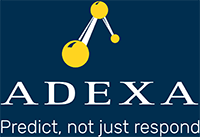Life after S&OP
Gartner reports that almost 70% of companies are either at stage 2 or 3 of supply chain maturity. Stage 3 is generally attributed to the use of S&OP technology in the supply chain. Perhaps you have already implemented S&OP or in the process of or thinking about it. But have you thought about what comes next? Stage 3 is a very preliminary step to digitalization but a long way from a digital twin of your supply chain. S&OP is really helpful to give long term visibility and a rough supply chain plan. It does not model your environment correctly enough to deliver accurate plans. Accuracy comes with data and ability of the system to model your environment as closely as possible. In the absence of that you are really doing spreadsheet planning with collaboration capability.
With S&OE you can create a digital twin that allows you to generate plans which are accurate enough for execution for short term and long term. It makes the system predictive as well as responsive. It is smart enough to detect supply chain trends and learn from them. It can self-correct the model, self-improve the operations and self-optimize the algorithms.
Many supply chain leaders think of S&OE as yet another system to be acquired or patched on to S&OP. Although this maybe a viable strategy but not a particularly efficient one. Having a separate system requires a separate database for each module and each business unit using their own system separate from each other. But even worse the models of S&OP and S&OE do not really talk to each other. They can pass data back and forth but not synchronize and operate in a way that makes them understand each other’s actions. These are virtually never synchronized, so you cannot get consistent plans across the entire model. You cannot even promise accurate delivery dates to your customers if you do not have an accurate model of your supply chain or the system is not capable of generating plans for this week or this month that is executable! Having two separate systems also implies having two separate S&OP meetings and S&OE meetings. Is this really necessary?
We think S&OE is an accurate version of S&OP, i.e. a continuum. In other words, once you implement S&OP then by simply adding more data you get closer and closer to S&OE and a digital twin. A unified data model that encompasses the entire horizontal and vertical planning for both long term and short term. A unified data model does not mean having a central system for planning. It means a continuous planning environment that is distributed and operates based on a unified understanding of all the constraints. A unified data model allows you to evolve from stage 3 to stages 4 and 5 maturity by simply making more data available to the system; as opposed to adding more systems that do not talk to each other.
So next time you are looking at S&OP solutions, ask your vendor about their S&OE solutions? Will it be based on the same unified data model or from two different vendors? Can it produce plans that are executable for today, this week and this month and beyond or just long term planning?
Using intelligent algorithms, we are now at a point of generating optimal plans that are accurate enough for immediate execution. The planners can now take a higher role of data engineers to observe the trends in the supply chain and improve the operations rather than the mundane task of allocating demand and jobs to resources. Digitalization is here and now. For more on this topic click Here.

“Having two separate systems also implies having two separate S&OP meetings and S&OE meetings. Is this really necessary?”


